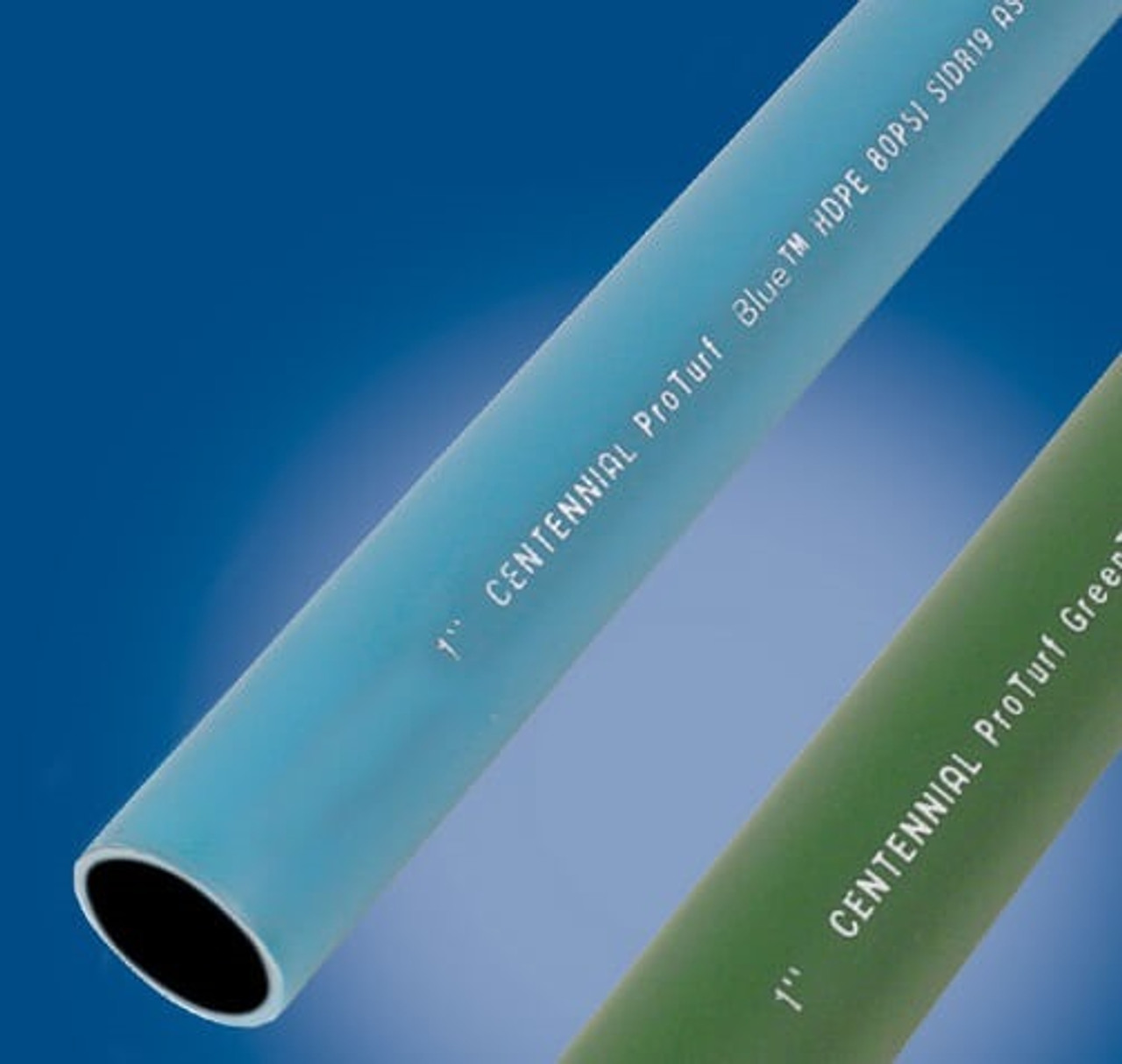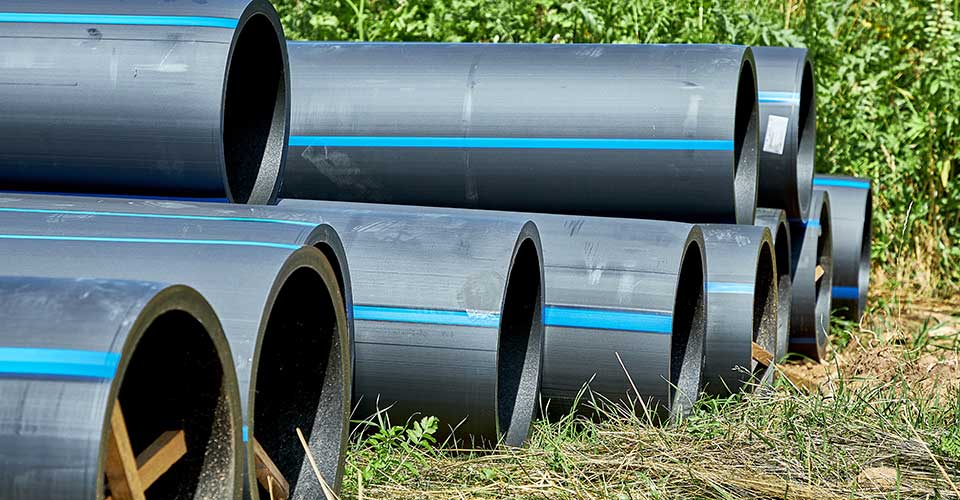American Plastics HDPE Pipe for Oilfield: Efficiency in Harsh Environments
Wiki Article
Check Out the Manufacturing Process Behind High-Quality HDPE Pipe and Its Applications
The manufacturing procedure of top quality HDPE pipes is detailed and methodical. It begins with the option of resources that boost performance. Following this, ethylene undergoes polymerization to create material, which is after that shaped through extrusion. Quality control is critical, guaranteeing that the final item meets rigorous criteria. However, the trip of HDPE pipelines does not end with production. Their applications across numerous industries reveal a more comprehensive value worth analyzing.Recognizing HDPE: Features and Advantages

High-density polyethylene (HDPE) is a versatile polycarbonate understood for its durability and resistance to different environmental factors. This material displays exceptional tensile stamina, making it ideal for demanding applications. Its low-density structure adds to a lightweight item, promoting convenience of taking care of and installation. HDPE likewise showcases impressive resistance to chemicals, which minimizes destruction when subjected to harsh compounds.
The product's reduced wetness absorption additionally improves its long life, making it perfect for use in pipes and storage space containers. Additionally, HDPE is immune to ultraviolet (UV) radiation, guaranteeing that products preserve their integrity even when revealed to sunlight. Furthermore, its flexibility permits the production of elaborate forms without endangering toughness. The eco-friendly nature of HDPE, usually originated from recycled products, includes in its appeal, promoting sustainable methods in manufacturing. In general, these residential properties and advantages make HDPE a preferred selection for numerous commercial and consumer applications.
Basic Material Choice for HDPE Production
The selection of resources for HDPE production is necessary to verify the end product satisfies the preferred specifications and quality criteria. High-density polyethylene (HDPE) is primarily produced from polymerized ethylene, stemmed from fossil gas such as gas or petroleum. The high quality of these feedstocks considerably affects the mechanical and thermal residential properties of the last HDPE.Additives additionally play a significant function in boosting HDPE's efficiency, consisting of anti-oxidants, UV stabilizers, and colorants, which boost resilience and resistance to ecological variables. The option process have to take into consideration not only the chemical make-up of the raw products but additionally their processing qualities to guarantee reliable manufacturing.
The sourcing of raw materials need to prioritize sustainability and compliance with ecological regulations, as accountable practices are vital in today's market. Eventually, mindful resources option lays the foundation for generating top notch HDPE pipes appropriate for diverse applications.
The Extrusion Process: Forming HDPE Pipe
The extrusion procedure plays a crucial duty fit HDPE pipelines, beginning with thorough material preparation strategies that ensure optimal circulation and uniformity. Just as vital is the design of the die, which straight affects the final dimensions and surface area quality of the pipeline. Together, these variables contribute significantly to the efficiency and top quality of HDPE pipe production.Product Preparation Strategies
Efficient production of HDPE pipelines begins with careful material preparation techniques, specifically the extrusion process. During this stage, high-density polyethylene material is first dried out to eliminate moisture, making sure suitable flow characteristics. The resin is then fed into the extruder, where it goes through home heating and melting, transforming into a thick state. This home heating process is thoroughly regulated to preserve the product's honesty and efficiency. The liquified HDPE is forced via a die, forming it into a constant pipe kind. Proper temperature level monitoring throughout extrusion is essential, as it straight affects the product's residential or commercial properties and the last product quality. Once formed, the HDPE pipe is cooled down and cut to specified lengths, all set for succeeding processing and applications.Die Design Significance
Accuracy in die layout plays an essential duty in the extrusion procedure of HDPE pipes. The die works as the last shaping tool, directly affecting the pipeline's dimensions, wall surface density, and surface coating. A properly designed die warranties consistent material flow, minimizing problems such as abnormalities and weak points. The geometry of the die need to be optimized to fit the specific buildings of HDPE, including its viscosity and thermal behavior during extrusion. Furthermore, the cooling rate of the material as it passes with the die can significantly affect the pipeline's structural stability. Consequently, spending in sophisticated die technology is crucial for producers intending to create premium HDPE pipes that fulfill market standards and consumer expectations.Quality Control Actions in HDPE Manufacturing
Various elements affect the top quality of HDPE pipe production, effective high quality control actions are vital to guarantee uniformity and dependability in the final item (Pipe Manufacturing Midland TX). Key quality assurance practices consist of extensive material examination, verifying that the raw polyethylene meets recognized criteria for purity and density. During the extrusion procedure, criteria such as temperature level, pressure, and cooling time are closely kept track of to maintain dimensional precision and structural integrityIn enhancement, post-production screening is essential; manufacturers frequently conduct hydrostatic tests to evaluate the pipe's strength and resistance to stress. Visual evaluations for surface issues better boost quality guarantee. Certification from pertinent criteria companies, like ASTM or ISO, supplies an extra layer of credibility. By executing these detailed quality assurance measures, makers can reduce issues, enhance performance, and make certain that the HDPE pipes fulfill the certain requirements of different applications, ultimately bring about client complete satisfaction and count on the item.
Applications of HDPE Pipe Throughout Industries
HDPE pipes are made use of across numerous industries as a result of their sturdiness and convenience. In water distribution systems, they guarantee effective distribution, while in wastewater monitoring, they provide reputable remedies for waste transportation. Furthermore, farming watering networks gain from HDPE's resistance to corrosion and adaptability, making it a suitable selection for modern-day farming techniques.
Water Circulation Systems
A considerable variety of industries count on high-density polyethylene (HDPE) pipelines for efficient water distribution systems. Recognized for their resilience and resistance to deterioration, HDPE pipelines are widely used in community supply of water networks, agricultural watering, and commercial applications. Their lightweight nature assists in simple handling and installation, minimizing labor costs and time. Additionally, HDPE pipelines can accommodate various pressure levels, making them ideal for both reduced and high-pressure systems. custom hdpe pipe manufacturing Midland TX. The versatility of the product enables for seamless combination right into existing infrastructure, minimizing the need for considerable excavation. HDPE's resistance to chemical leaching warranties that the water delivered stays safe and tidy, making it a perfect option for keeping the high quality of potable water throughout numerous markets.Wastewater Monitoring Solutions
Reliable water circulation systems likewise lead the way for innovative wastewater monitoring services, where high-density polyethylene (HDPE) pipes play a significant function. Prominent for their sturdiness and resistance to deterioration, HDPE pipelines are perfect for delivering wastewater in numerous setups. Their flexibility enables for simple installment in complex atmospheres, lessening the need for comprehensive excavation. In addition, HDPE's smooth indoor surface lowers rubbing, enhancing flow prices and efficiency. These pipes are also resistant to chemical leaching, making sure that pollutants do not endanger the surrounding setting. Industries, districts, and treatment centers increasingly rely on HDPE pipes for their reliability and longevity, making them a preferred option for contemporary wastewater monitoring systems. This flexibility underscores the vital relevance of HDPE pipes across many applications.Agricultural Irrigation Networks
Agricultural watering networks profit significantly from making use of high-density polyethylene (HDPE) pipelines, which offer efficient and dependable water delivery to plants. HDPE pipes are lightweight, making them very easy to deliver and set up, while their flexibility permits numerous setups in varied surfaces. These pipelines show outstanding resistance to deterioration, chemicals, and UV radiation, making certain longevity in rough agricultural settings. In addition, their smooth interior surface reduces friction loss, enhancing water flow and reducing power costs connected with pumping. The longevity of HDPE pipelines, typically exceeding half a century, adds to lower upkeep and replacement costs. Farmers progressively depend on HDPE pipes to enhance irrigation efficiency and advertise sustainable agricultural methods, ultimately leading to enhanced crop returns and source conservation.
Future Trends in HDPE Pipe Modern Technology
As the demand for sustainable and reliable infrastructure expands, developments in HDPE pipeline technology are positioned to change different industries. Emerging trends include the combination of clever technologies, such as sensing units and IoT capacities, which assist in real-time monitoring of pipe problems, minimizing upkeep prices and protecting against leakages. Furthermore, the growth of advanced production techniques, such as 3D printing, is allowing the production of complicated, personalized pipeline layouts that satisfy specific project requirements.Moreover, the concentrate on recycling and round economic situation practices is driving the advancement of HDPE pipelines made from recycled products, boosting sustainability. Enhanced jointing techniques, such as electro-fusion and mechanical installations, are also enhancing installment efficiency and integrity. The growing emphasis on ecological guidelines is pressing producers to embrace greener production processes, ensuring that HDPE pipelines not only meet market standards however additionally cultivate an even more sustainable future for framework advancement.
Frequently Asked Inquiries
How Does HDPE Compare to Various Other Plastic Materials?
HDPE exceeds lots of other plastic materials concerning longevity, chemical resistance, and flexibility. Its reduced density and high tensile strength make it suitable for different applications, typically surpassing alternatives in both performance and long life.What Are the Environmental Effects of HDPE Production?
The environmental influences of HDPE production include greenhouse gas emissions, power usage, and potential air pollution from manufacturing processes. In addition, improper disposal can cause dirt and water pipe freezing services contamination, raising worries about long-term environmental results.Can HDPE Water Lines Be Recycled?
Yes, HDPE pipes can be recycled. Several centers accept used HDPE for processing, changing it right into brand-new products. This reusing adds to sustainability initiatives, decreasing plastic waste while preserving resources and power in the manufacturing cycle.What Is the Life Expectancy of HDPE Piping?

Just How Do Temperature Level Variants Influence HDPE Pipeline Performance?
Temperature variations considerably influence HDPE pipeline efficiency, affecting versatility and stamina. High temperature levels can bring about softening, while reduced temperatures may trigger brittleness, inevitably affecting the pipeline's longevity and suitability for numerous applications in diverse atmospheres.Report this wiki page